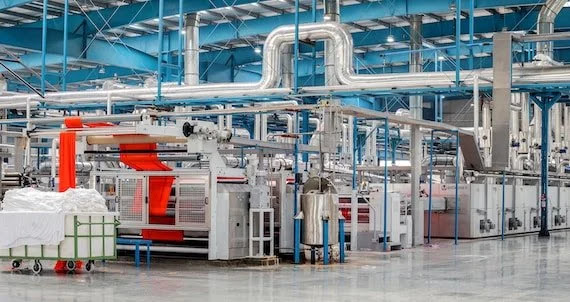How to Improve the Manufacturing Life Cycle of a Product?
The lifecycle of a product mostly revolves around product design and marketing. However, there are significant implications for the manufacturing process and strategy that also impact the overall product lifecycle.
As technology continues to evolve and customer preferences change, businesses are required to develop new products and manage their established product line at the same time. While the aspects of product design and marketing are important for success, the manufacturing process must be equally competent to enable the business to cope with the rapid pace, intense competition, and evolving demands of the market. This article offers valuable insights into how the manufacturing process of a product can be improved to add value to the product lifecycle.

Tips to improve product manufacturing for better productivity and efficiency
Manufacturing generally refers to the process of modification of raw materials for product production. This can be achieved through employing human labor and using tools and machinery. The components of the process may vary from one product or assembly to the next but generally include design, prototyping, testing, parts production, assembly, and packaging from where the product is directed to logistics and shipment.
Regardless of its scale or nature, the goal of any manufacturing process is to improve efficiency to boost productivity, while the important considerations that determine success in this regard are
● High-quality work
● Lower cost
● Consistency
● High production rate
Focus on employee training
Since the workforce is an important component of a manufacturing process, you must focus on employee training and improve coordination of the workforce and the processes to boost the efficiency of the processes. This becomes particularly important if any new equipment is to be used for production since employees will need to familiarize themselves with it before using it.
Hence, regular manufacturing training should be an important element of the business's manufacturing strategy. In this regard, job training and detailed training logs must be included in the overall training program for product manufacturing.
Automate processes to reduce time and cost and increase consistency
While you do not necessarily need to invest in expensive or bigger machinery, you must consider tools or processes that help improve various stages of the manufacturing process. For instance, data automation can help eliminate the need to collect and organize data manually and also enables real-time analysis of the production process to determine areas lacking in efficiency.
Similarly, when it comes to the assembly floor, CNC (computer numerically controlled) milling machines, with their hi-tech software, can be used to produce prototypes or parts quickly and with consistent quality.
For making a prototype, CNC milling can help reduce the lead time to actual product manufacturing as it enables a highly precise manufacturing process, minimizing the likelihood of errors and preventing the need for modifications. The part or product drawing is simply fed into the system, and the machine does the rest of the work, increasing accuracy and reducing the time and cost of the production of the prototype to a significant extent.
The prototype can be tested to assess if changes or improvement is required in the product design and production process and what quality control measures will be required. This can speed up prototype approval and reduce the lead time to mass production. CNC milling can also be helpful if the product has a complex shape or design, as the machine can be programmed to deliver according to the required design and dimensions. The software caters to the technical details leaving little room for error in the production process.
Maintain manufacturing equipment
It is important to have a maintenance schedule to carry out basic maintenance of the machines. Doing so will help ensure that the machines continue to run well and operations continue without a hitch. This reduces the downtime and prevents a strain on profit margins as a breakdown in the middle of manufacturing can quickly escalate into a huge dilemma, leading to low productivity and increased costs. It also helps to keep spare parts and equipment to cope with unforeseen events.
Final Thoughts
Manufacturing plays a vital role by establishing that the product can be manufactured easily at optimized costs and is of high quality. The guidelines mentioned in this article refer to some of the usual aspects that can impact the manufacturing lifecycle of a product.
While there may be numerous components of a manufacturing lifecycle depending on the product or industry, it mainly serves as the bridge between product design and its marketing and has a significant bearing on the overall product lifecycle. Hence if the manufacturing process is efficient, it will help deliver a quality product in a short time and improve the product's lifecycle.

No comments